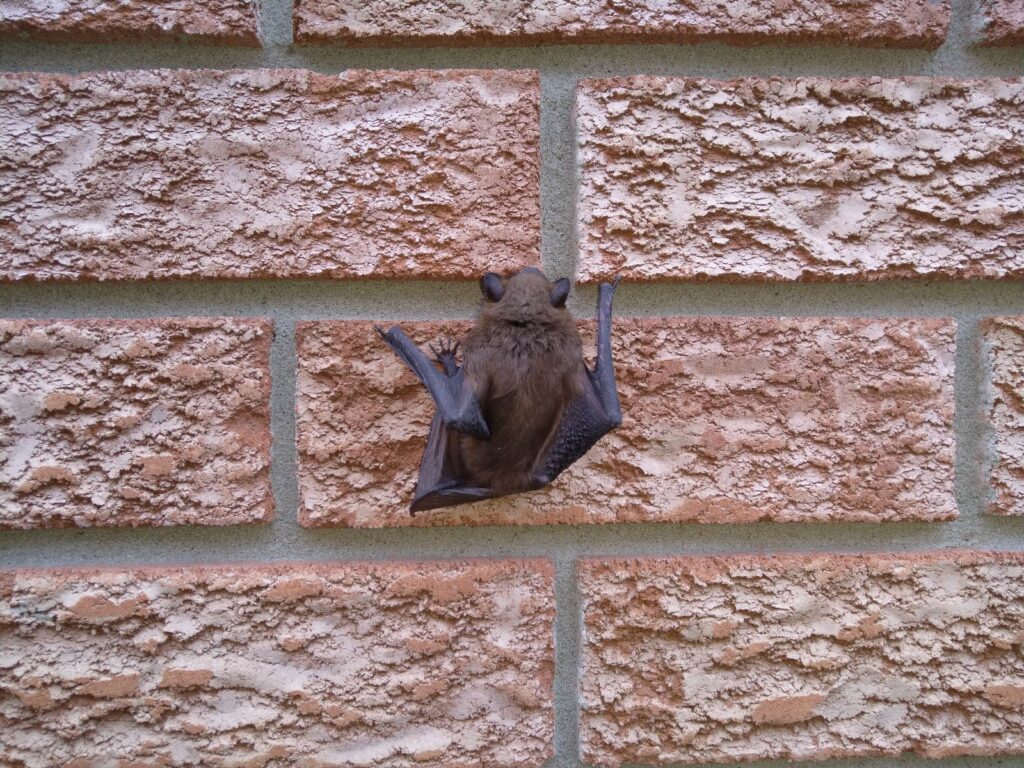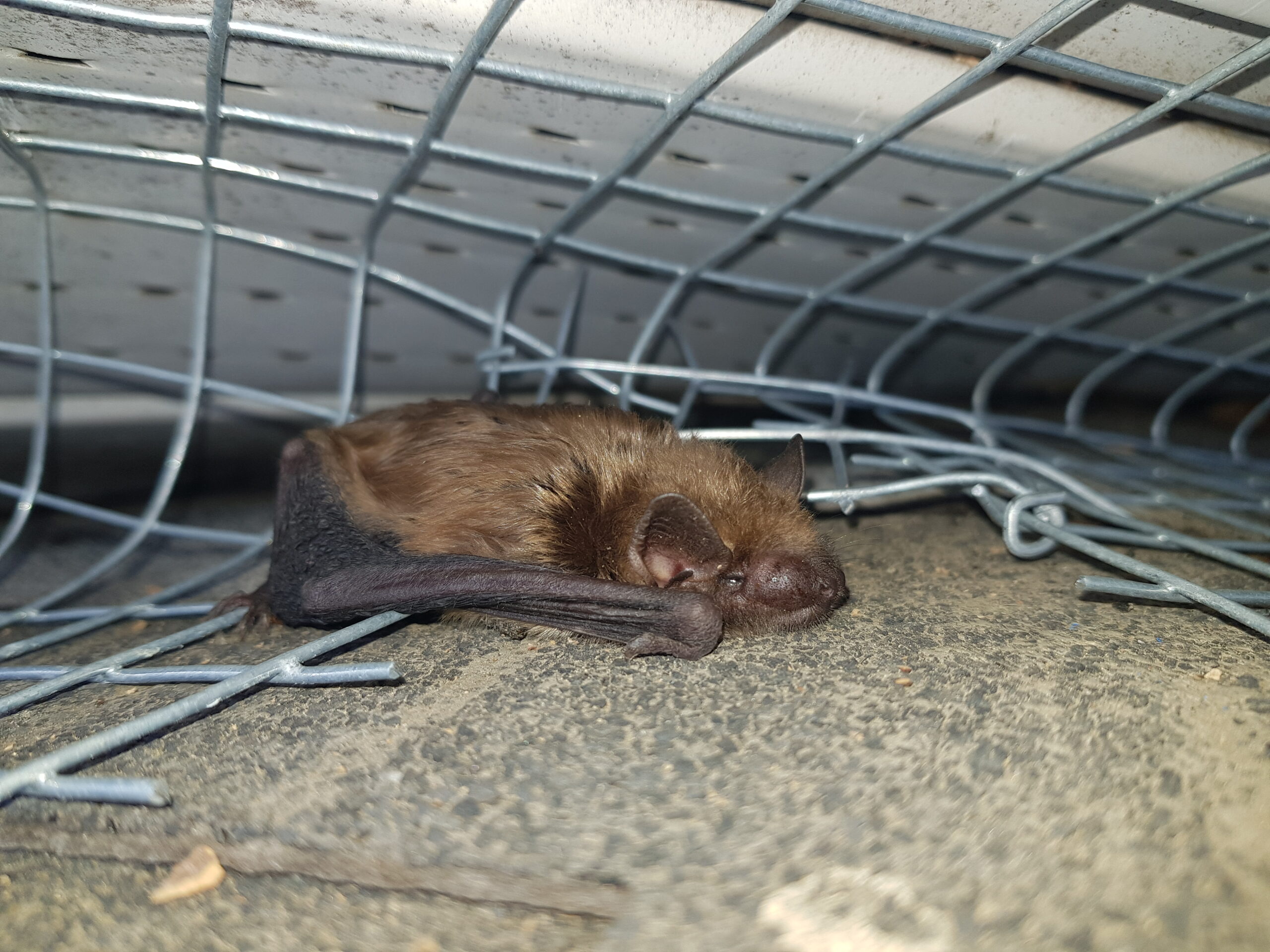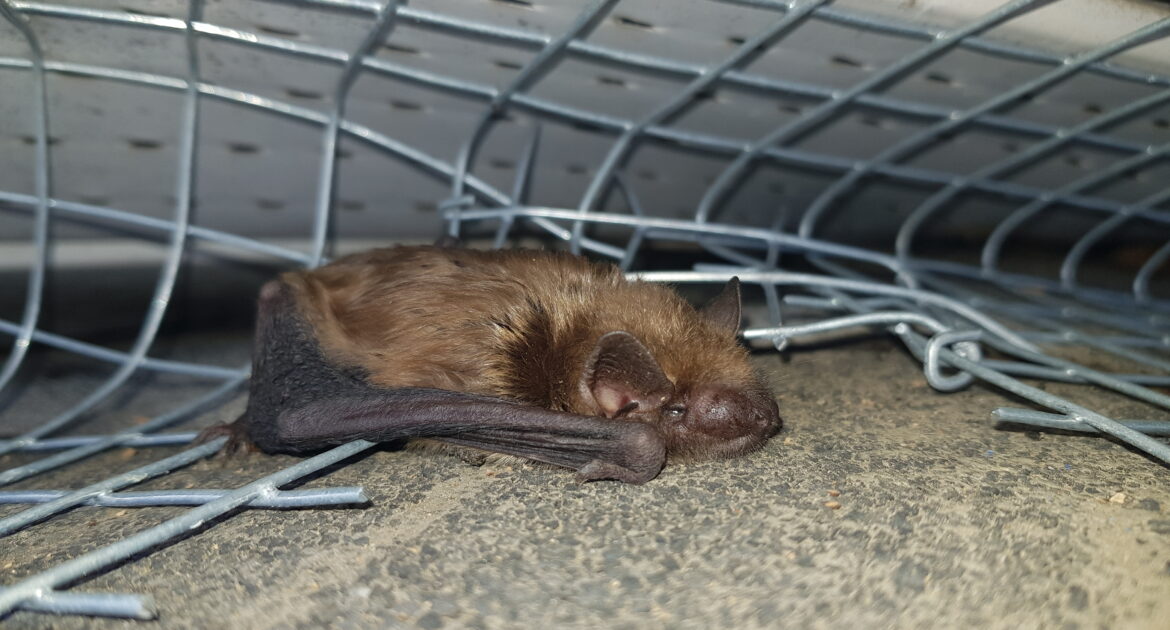As the temperature continues to drop, you may notice a decrease in the presence of wildlife around your home. However, it’s important to remember that some animals, like bats, seek shelter in warm spots during the cold months. While these winged creatures help control the insect population during the summer, they can become a nuisance when they take up residence in your attic or chimney.
That’s where Skedaddle Humane Wildlife Control comes in. Our team specializes in wildlife control in Blaine, including bat removal. It’s important to call us at the first sign of an infestation to ensure their safe removal and minimize any potential damage to your home. Trust our experts to use humane and efficient methods to keep your home bat-free this winter.
Understanding The Behavior Of Bats In Cold Months
Bats, like many other creatures, have a unique adaptation to deal with freezing temperatures. During the cold season, they enter a state called hibernation. This energy-saving mode slows their metabolism, heart rate, and body temperature to a level that enables them to survive during the winter months when food is scarce. Not every bat species hibernate. Some migrate to warmer regions where food is available.
Migration vs Hibernation
Two common groups of these animals can be found within Blaine, which include both migratory and hibernating species. It’s essential to understand their distinct behaviors to implement effective exclusion methods.
- Migratory Bats: These are the types of bats that relocate to warmer areas when autumn arrives. They seek regions where the food supply is abundant and weather conditions are ideal for their survival.
- Hibernating Bats: These species stay in the local area, finding secluded spots to hibernate throughout the winter. You could find them in caves, abandoned mines, and in some cases, your attic.
The Process of Bat Hibernation
Hibernation in bats isn’t a light nap, it’s an intricate process. It begins with them gorging on insects and building up fat stores that help them survive the winter. Once temperatures begin to drop, they will seek out a suitable hibernation spot, often referred to as a hibernaculum. For hibernating bats, your cozy, quiet attic makes a perfect hibernaculum.
During hibernation, their body temperature can drop to match that of their surroundings, and their heart rate can slow down to a staggering two beats per minute. They will stay in this state until spring when the weather warms and food is ample again.
Remember: Bats in hibernation are in a vulnerable state and should not be disturbed. Interrupting their hibernation can expend their reserved energy, potentially leading to starvation.

Identifying Bats in Hibernation
Identifying a hibernating bat can be challenging because of their selected locations, often hidden and high up. However, some signs indicate their presence:
- Droppings or guano near entrance points, like your attic.
- Stains or rub marks caused by the oil and dirt on their fur, by entrance points.
- Noises such as squeaking or crawling sounds in your attic or walls in the late afternoon or early morning.
Learning about bats’ winter behavior is beneficial in understanding their life cycle and how to protect them, but it also helps in implementing effective exclusion measures in your home. A well-informed homeowner is a prepared homeowner.
The Dangers And Risks Of Having Bats In Your Home
As startling as it may be to find bats in your home, the potential health risks and damages they pose are even more alarming. While they play valuable roles in our ecosystem, they are not welcome roommates. So, why exactly should you be concerned if you spot one on your property during the colder months? Let’s delve into the dangers and risks associated with bat infestations.
Guano Accumulation & Related Health Risks
One of the primary concerns about bat infestations is the accumulation of their droppings, also known as guano. Guano is not only unpleasant and odorous; it is a breeding ground for a fungus called histoplasma capsulatum. This fungus releases spores that, if inhaled, can lead to a respiratory disease called histoplasmosis.
Structural Damage
Bats, particularly when in large numbers, can cause significant damage to your property. They can scratch and gnaw on woodwork, insulation, and electrical wires, leading to expensive repairs. The corrosive nature of guano can also degrade construction materials, significantly affecting the structural integrity of your home over time.
Potential Spread of Rabies
Though it’s essential to note that not all bats carry rabies, the risk is still present. They are among the most common transmitters of this fatal virus to humans. If a bat in your home bites or scratches you, it’s critical to seek immediate medical attention to avoid the potentially devastating consequences.
To summarize, these animals can pose significant health risks and property damage. While they might be fascinating creatures in the wild, having them inside your home, especially during the cold months when they hibernate and remain for extended periods, is not advisable. Do not try to remove them on your own, and instead, if you’re experiencing a bat issue, call in professional help.

Preparing Your Home For Bat Prevention
Keeping bats away from your residential space and ensuring their safe relocation into their natural habitats shouldn’t be daunting if you’re well-equipped with the right knowledge and tools. Here’s how you can make your home uninviting for these animals and reduce their chances of treating it as a potential hibernation spot.
Maintain Your Exterior Property
First things first, do an exterior scan of your house. This includes checking for cracks or openings in attic vents, chimneys, windows, doors, and roofs. Also, be on the lookout for loose or missing roof shingles that they could lift.
Keep up with property maintenance by trimming overgrown trees and shrubs, especially those located near your house. Bats can use tree branches as launching sites to gain entry into your home.
Good Lighting Can Be a Deterrent
Bats are nocturnal in nature. Therefore, having well-lit areas around your property, especially in places like attics and roofs, where they are known to take refuge, can discourage them from taking up residence.
Regular Inspection and Quick Action
Last but not least, regular inspection of your property for signs of the animals or their droppings is crucial. This is particularly vital during the cold months when they’re more likely to seek refuge in your home. It’s easy to ignore the small signs until the problem grows into a larger, more major infestation. If you find any signs, take swift action to address the issue and contact a professional wildlife removal service.
Remember, the goal of bat prevention is not to harm them but rather to discourage them from setting up their roost in your home. These wild animals are protected by law in many areas and perform vital roles in our ecosystems like pest control and pollination. Therefore, it’s essential that any methods used are safe and humane.
The best way to protect your home from bats is to always stay alert and keep an eye on potential signs of their presence. Prevention is more about proactive measures and timely intervention than relocation or extermination of these essential creatures.
Sealing Off Entry Points
Once you have ensured the removal of the animals, don’t forget to seal off all the entry points to prevent them from re-entering. A professional wildlife removal service can inspect your home for potential entry points and ensure they are properly sealed.
When to Call Wildlife Removal Services Like Skedaddle
While bats usually signify a healthy environment, an accumulation of them in domestic spaces often presents a series of problems. From health threats posed by guano and rabies to physical damage, they can complicate winter comfort. Therefore, prevention is key. Proactive measures such as exterior maintenance, good lighting, regular inspection, and sealing off entry points can help. However, for safe, effective, and humane wildlife removal, skilled professionals make all the difference.
So why take risks? If you spot signs of bats hibernating in your home or foresee a potential concern, reach out to trained wildlife removal services like Skedaddle. Our expertise in dealing with these situations will ensure a swift, ethical resolution. Give yourself peace of mind this winter. Click here to schedule a consultation, and let Skedaddle take care of your bat removal.




